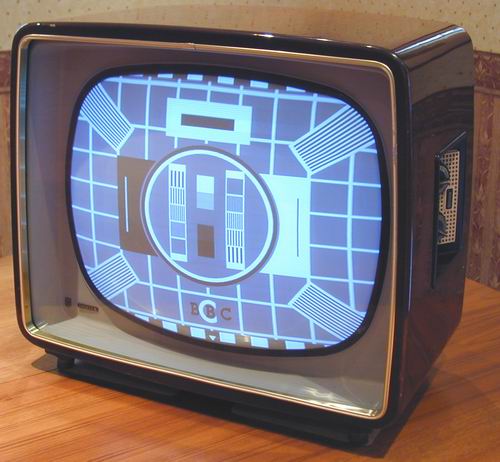3D Printing is a clever idea, but its not going to change civilisation for the better..!
Bring on the civilisational game changer of 3D Oasis Cities..!

Just before the dawning of the internet age my then partner, a secretary, raved about the fax machine which she enthused as “the greatest invention of all time..!” Although almost forgotten now, fax machines brightened up office life by being handy for sending and receiving rude cartoon jokes. Almost as suddenly as they appeared Faxes were soon kicked off the stage by the mobile phone and the internet. More recently 3D printing has been hailed as a miracle technology that could even be “used to build a moon base remotely”, although the forecasters quickly backtracked saying it would not happen for decades.
Why fantasise about 3D-printed moon-bases – which will not happen for many decades if ever – when we could start building far more useful 3D Oasis Cities here on earth tomorrow?
DESPITE AN AVALANCHE OF GAME-CHANGING INVENTION, CITIES – DESPITE BEING HAILED AS “MANKIND’S GREATEST INVENTION” – HAVE STUBBORNLY DEFIED EVOLUTION
Civilisation, which has always been defined by cities, has gone through more technological and social revolution in the space of a brief human lifetime than in the previous 5,000 years of recorded history. And the pace of change and innovation has been accelerating exponentially. Almost everything that was in its time thought to be the ultimate invention, like television, has been improved out of all recognition.

[stextbox id=’info’ caption=’AVALANCHE OF INVENTION AND INNOVATION ‘]1950’s TV’s – small screens encased in a bulky box – were considered miraculous even though based on very unreliable heat-emitting vacuum tubes. Before long other, arguably even more miraculous, devices began to make an appearance in our homes, in our hands, and in our pockets. In rough, if not exact, order came Transistor Radios, Cassette Tape Recorders, Microwave Ovens, Compact Discs, Fax Machines, Video Recorders, Video Cameras, Digital Cameras, Desktop Computers, and then portable Laptop Computers that every year became slimmer lighter and more powerful. Mobile Phones – first appearing in the 1980’s as a (very expensive) “Brick” – morphed into the incredible shrinking Mobile phone, before evolving into “smart-phones” and growing larger again. Now we can buy a mobile phone with calculator, clock, computer and camera – and countless clever “apps” – in a skinny slab the size of a 100g chocolate bar.
FUTUREOLOGISTS NEVER FORESAW THE INTERNET…
The internet has been an indispensable part of our lives for barely a generation, but who could now conceive of a world without it? Courtesy of “social-media” sites we can “post” photos, ideas, jokes and news items, or we can engage in “real time” discussions or idle chit-chat with people all over the world – most of whom we have never met – that we call “Facebook friends”, rather like small children have their “imaginary friends”.
Until quite recently international phone calls were made sparingly usually on special or urgent occasions – on what was frequently a poor quality connection – whilst anxiously watching the clock ticking our money away. Now, courtesy of yet another clever App, we can have absolutely free instant voice and video communication with friends and family wherever they might be in the world. Having always been a sponge for useless information, what I find so endlessly fascinating and appealing is that, wherever in the world I am, I now have instant access to virtually all the knowledge in the entire world. Most amazing of all is how quickly it has happened and how quickly we have taken it all for granted..!
And yet – 1950’s FUTUROLOGISTS WOULD BE DISAPPOINTED AT THE LACK OF PROGRESS IN MANY WAYS
Futurologists and sci-fi writers of the 1950’s expected that, well before the turn of century, we would have great orbiting space-stations like that in “2001 Space Odyssey” (1968) and permanent bases, even colonies, on the Moon and even on Mars. We all remember JFK’s famous pledge to put a man on the Moon by the end of the ’60’s, but the pledge to put a man on Mars by the end of the ’70’s is now long forgotten..! The best we have is a utilitarian hodge-podge of steel tubes and cylinders grandly called the “International Space Station”. Like others of my era I am terribly disappointed that stylishly sleek “Dan Dare” spaceships capable of deep space exploration never came to pass and maybe never will. But then again, we have lots of other stuff that were NEVER imagined, notably the amazing internet.

MEANWHILE, CITIES HAVE EXPANDED AND FESTERED LIKE A CANCER
But, despite this incredible revolution in informational access and voice/video communication, the most important driving force and expression of civilisation itself – CITIES – have somehow evaded evolution and become larger, noisier, slower, less efficient, less safe, and less liveable than before.
2D Cities can be likened to a cancerous tumour which has spread un-controllably into an ugly and unhealthy and increasingly chaotic and untidy crime-plagued urban sprawl.
What would cities look like if – as with computers and mobile phones – they had evolved into more compact, more aesthetically attractive, and more efficient designs that use much less energy and perform much better..?
VISIONARY ARTISTS EXPECTED THAT – BY THE 3RD MILLENNIUM – CITIES WOULD HAVE CHANGED FAR MORE THAN WHAT THEY HAVE
Visionaries of the 1920’s and 1930’s imagined future cities of sleek spires and monolithic skyscrapers connected by a vast network of suspended roadways and monorail systems and a sky teeming with insect-like small personal planes. It was EXPECTED that cities WOULD LOOK RADICALLY DIFFERENT after 100 years, but this has not happened. They also expected we would have colonies on other planets, but we have yet to invent something better than the primitive V2 rocket technology that were used to bomb London 80 years ago. The sleek and sexy single-stage “space-ships” visualised in “Dan Dare” – and the sophisticated space-stations of “2001 Space Odyssey” – have not come to pass. We persist with an outmoded system since, for now, we have no alternative.
[stextbox id=”black”]What “excuse” is there for sticking with the outmoded 2D city model when we have the technology to create and build 3D OasisCities that would solve most of our environmental and social problems..?
Almost 100 years after they were drawn the cities depicted below still look very futuristic but – despite an initial Wow..! – they are not any real improvement on what we already have.


